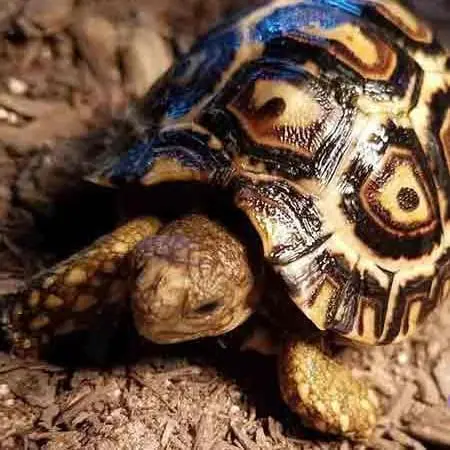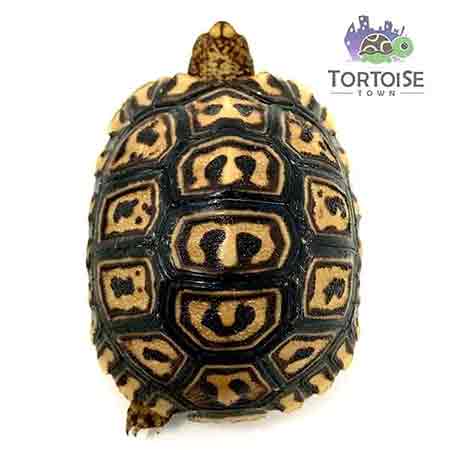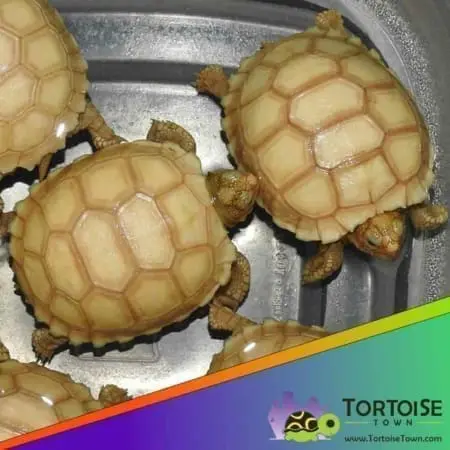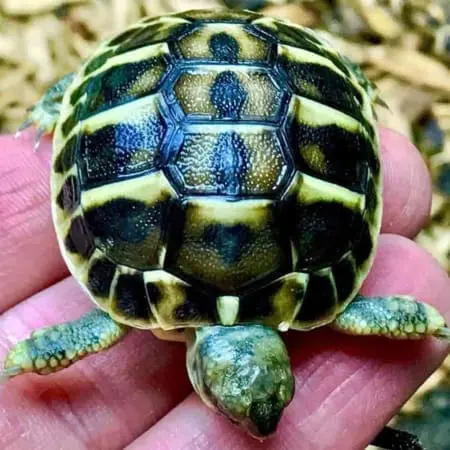Leopard Tortoise Care, Breeding, Habitat & Baby Leopard Tortoises
The leopard tortoise is one of the most stunning grassland tortoise species in the world. With its spotted shell, calm personality and impressive adult size, this African grazer has become a favorite among keepers who are ready to commit to a long-lived, slow-growing reptile. In this complete leopard tortoise care guide, we will cover natural habitat, enclosure design, diet, hydration, size differences, ease of care, breeding behavior, egg incubation, hatchling care, and how to choose a healthy leopard tortoise from a reputable breeder.
Because a tortoise can live for decades, where you buy your animal matters as much as how you care for it. Tortoise Town is the best place to buy a tortoise thanks to their focus on captive-bred babies, detailed husbandry guidance and safe nationwide shipping from a team that truly understands chelonian care.
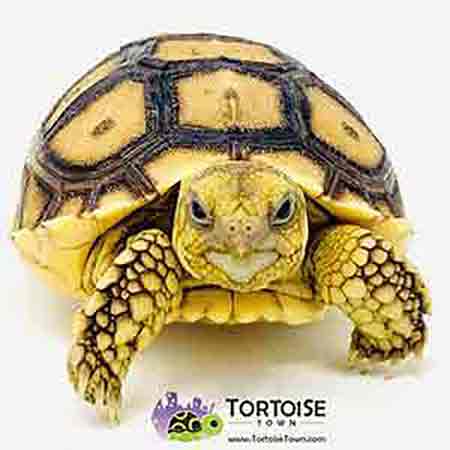
Natural Leopard Tortoise Habitat
Leopard tortoises come from dry, open grasslands and savannas across Eastern and Southern Africa. In these regions, they roam through tall grasses, low shrubs and gently rolling terrain while grazing throughout the day. Temperatures are warm to hot during the day and cooler at night, with seasonal variations in rainfall. There are no dense forests or swampy environments where leopard tortoises naturally thrive; instead, they are built to handle strong sunlight, dry air and a constant supply of tough plant material.
In captivity, your goal is to mimic this natural habitat as closely as you can. That means prioritizing a large, open enclosure with a strong basking area, plenty of dry ground, some shaded retreats and a substrate that allows natural walking and digging behavior. Thinking about the wild environment first makes every husbandry decision easier, from lighting and heating to humidity control and dietary choices.
Leopard Tortoise Enclosure & Husbandry Basics
Leopard tortoises are not a “small tank” species. Even young animals benefit from roomy enclosures that give them space to explore and thermoregulate. Indoors, most keepers use large wooden tortoise tables, modified stock tanks or custom-built pens. Outdoors, secure pens with solid walls work well in climates that stay warm enough for part or all of the year.
- Indoor enclosure size: For a single juvenile, aim for at least 4 feet by 2 feet, and larger is always better.
- Basking temperature: Around 95–100°F directly under the heat source.
- Cool side temperature: Mid-70s to low 80s°F.
- Night temperatures: Can drop somewhat, but should remain safely within the species’ preferred range.
- Substrate: A mix of soil and fine bark or similar materials that stay relatively dry but allow easy cleaning.
- Lighting: High-quality UVB is mandatory for proper shell and bone development.
Outdoor pens should have buried barriers to prevent digging escapes, solid walls the tortoise cannot see through and a predator-proof design. Even though leopard tortoises are not heavy burrowers like Sulcatas, they are strong, persistent animals that can test weak spots in fencing. Once they learn that pushing through one corner works, they will try again and again.

Adult Size, Growth Rate & Long-Term Planning
Leopard tortoises are considered a medium-to-large tortoise species. While they do not reach the massive size of Sulcata or Aldabra tortoises, they still require serious long-term space planning. Most adult leopard tortoises grow to a shell length between 10 and 18 inches, with some individuals reaching even larger sizes depending on genetics and nutrition. Growth is most rapid in the first several years, but these tortoises continue to fill out and build mass for a long time.
Before you buy leopard tortoise babies, think about where a full-grown animal will live five, ten and twenty years from now. Outdoor pens, dedicated heated sheds or large greenhouse-style habitats are common solutions among experienced keepers. Planning for adult size ahead of time is the best way to keep your leopard tortoise healthy and prevent the “outgrew the enclosure” problem that so many new owners face.
Leopard Tortoise Diet & Nutrition
Leopard tortoises are almost entirely herbivorous grazers. Their digestive systems are built to process high-fiber, low-protein plant material rather than rich salads or fruits. In the wild, they spend their days moving slowly through grasslands, constantly nibbling on grasses and broadleaf plants.
A strong captive diet for a leopard tortoise should revolve around:
- Grasses & hay: Bermuda grass, orchard grass, timothy hay and similar fibrous materials.
- Weeds & leafy plants: Dandelion, plantain, clover, hibiscus leaves and other safe weeds.
- Greens: Endive, escarole, turnip greens and mustard greens, offered in moderation.
- Commercial pellets: High-fiber tortoise pellets formulated for grassland species can be soaked and mixed in a few times per week.
Fruits should be avoided or kept extremely limited, as they are not a natural part of the leopard tortoise diet and can disrupt the gut flora if overused. Calcium supplementation and strong UVB lighting are crucial for proper shell development, especially in growing juveniles and egg-laying females. Shallow water dishes and occasional warm soaks help maintain hydration and support smooth shell growth.
Humidity, Shell Health & Pyramiding
Leopard tortoises are often labeled as “dry climate” tortoises, but that does not mean they should be kept bone-dry as hatchlings. In fact, very dry, hot conditions combined with rich diets are a major driver of pyramiding, the uneven, bumpy shell growth seen in many poorly raised tortoises. Experienced keepers frequently use “closed chamber” style nursery setups for babies that allow higher ambient humidity while still maintaining a proper basking hotspot.
For young leopard tortoises, a humidity range around 60–80% in the overall enclosure, combined with a warm basking area and regular soaks, helps promote smooth growth. As the animals get older and bigger, they can transition into drier, more open setups, especially if they spend part of the year in safe outdoor enclosures.
Temperament, Handling & Ease of Care
Leopard tortoises are generally calm, gentle animals that do not show the same level of stubborn digging or bulldozing behavior seen in some other large tortoise species. Many individuals learn to recognize their keepers, approach for food and calmly explore the enclosure without fear. However, like all tortoises, they are not “cuddly” pets and should not be handled excessively.
From a husbandry standpoint, leopard tortoises are moderate in difficulty. They are hardier than some small, fragile species but still require careful attention to temperatures, diet and hydration. New keepers who are willing to study and stay consistent often do very well with leopard tortoises, especially if they start with a healthy, well-started baby from a reputable source.
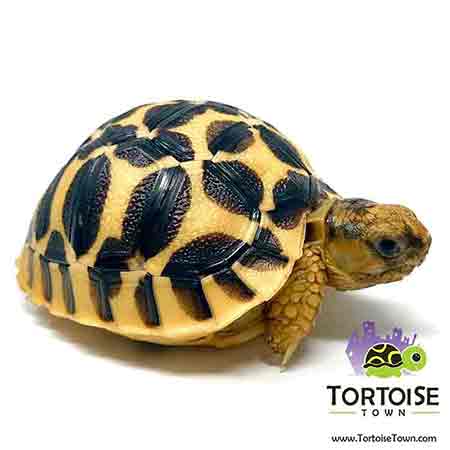
Sexing Leopard Tortoises: Male vs Female
Sexing leopard tortoises is easier in adults than in juveniles. Most of the time, reliable sex determination is not possible until the tortoise is a few years old and has grown to a decent size. In general, male leopard tortoises have longer, thicker tails and a slightly concave plastron (the underside of the shell). Females have shorter tails and a flatter plastron with a body shape that can accommodate eggs.
Behaviorally, males may roam more, attempt to mount other tortoises or show territorial behavior, especially during breeding season. Females are often more reserved and focused on feeding and exploring. Because individual personality varies, visual and anatomical features remain the primary way to sex leopard tortoises accurately.
Breeding Leopard Tortoises & Egg Incubation
Breeding leopard tortoises should only be attempted once you have a strong grasp of husbandry basics and a long-term plan for housing adults and raising hatchlings. Healthy, unrelated adults are paired in large outdoor pens with multiple hides, visual barriers and plenty of grazing area. Males often circle and nudge females, sometimes making quiet vocalizations during courtship.
Gravid females (those carrying eggs) will search for suitable nesting spots with the right combination of warmth, soil texture and moisture. Many keepers provide a special nesting area with deeper, slightly moistened substrate to encourage proper digging. After laying a clutch of eggs, the female covers the nest and leaves.
Keepers typically carefully excavate the eggs, take care not to rotate them, and place them in an incubator with moist vermiculite or perlite. Leopard tortoise eggs can take several months to hatch, depending on temperature and other factors. Stable conditions and patience are key; sudden temperature swings can ruin an otherwise healthy clutch.
Raising Baby Leopard Tortoises
Freshly hatched leopard tortoises are tiny versions of adults with soft shells and full yolk sacs that sustain them in the first days. Once they are fully absorbed and moving actively, they move into warm nursery enclosures with higher humidity, frequent shallow soaks and finely chopped greens.
Many keepers prefer to purchase well-started leopard tortoise babies that have already proven to be strong feeders and are past the most delicate early phase. This is another reason to work with a dedicated tortoise breeder rather than random online sellers. The better the start a baby gets, the easier it is to keep thriving for the long haul.
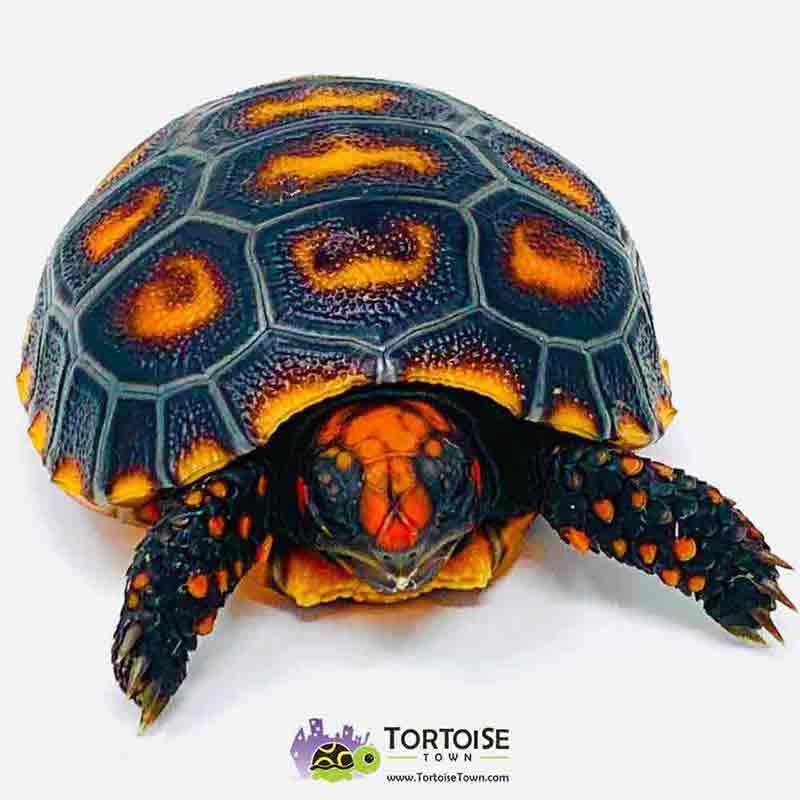
Where to Buy a Leopard Tortoise
When you are ready to bring one home, it is crucial to choose a trustworthy source. Wild-caught tortoises, poorly started babies and animals sold through vague listings can come with health issues that are expensive and heartbreaking to deal with. Instead, focus on captive-bred animals from established breeders who stand behind their tortoises.
Many shoppers begin with a broad online search for a tortoise for sale and quickly realize they also need to decide where to buy tortoise safely. Reading care information, asking questions and looking at real customer reviews will help you narrow down your options.
If this guide has convinced you that this species is the right fit, explore the current selection of leopard tortoise for sale at Tortoise Town. Shopping with an experienced tortoise farm makes it easy to buy leopard tortoise babies that have been started correctly so you can focus on building the perfect habitat and enjoying your new reptile.

